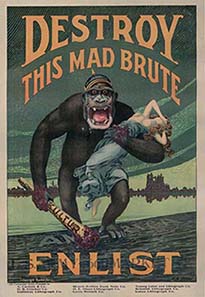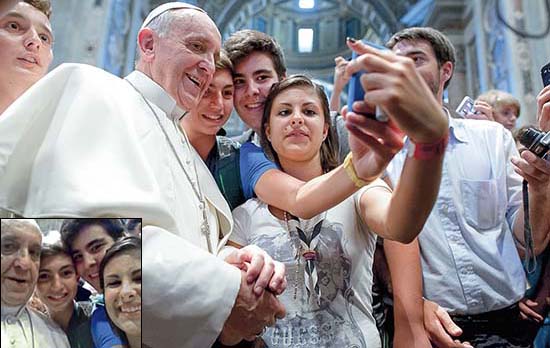Vatican 2.0
One of the big stories of 2013 was Pope Francis' breakout success in the digital realm. In August, he made headlines with the first papal "selfie" photo. In November, the number of people following him on Twitter surpassed 10 million, placing him slightly below Kanye West and above The New York Times in popularity. But the Vatican hasn't always embraced the Internet. As with the introduction of radio and television in previous generations, says Andrew Bills '09, the Vatican initially cautioned Catholics about its dangers. His master's thesis in liberal studies will analyze the Vatican's use of the Internet to market the church to a younger, more global audience. "Here we have one of the most ancient institutions still standing, 2,000 years old, with more than a billion adherents," says Bills. "I think it's fascinating to see how they make sense of, and leverage, new technologies that they once feared."

Library of Congress, LC-DIG-ds-03216
BRUTAL: Columbia, the female personification of America, is in the grip of a blood-thirsty brute representing the German Kaiser in this World War I propaganda poster designed to convince Americans to enlist.
|
Poster as Propaganda
In 1917, Uncle Sam needed to sell the American public on going to war with the Germans, and fast. He didn't have TV. He didn't even have radio. But he did have more than 300 artists and illustrators—including Edward Hopper and N.C. Wyeth—who had volunteered to work without pay for the Committee on Political Information. The result, in the form of hundreds of thousands of propaganda posters, was "possibly one of the most successful advertising campaigns to have ever been launched," writes Kelly LaBrecque '08G, who has a bachelor's degree in political science and a certificate in graphic design. In her master's thesis, she evaluates the posters through the lens of graphic design. Some, she notes, are so heavy with text in different colors and fonts that they are confusing to the eye—and incomprehensible to the many Americans who couldn't read. A much more visual approach in "Destroy This Mad Brute" (left) effectively plays on fears of a German invasion, showing a blood-thirsty-brute-as-German-Kaiser heading straight for the United States, with a devastated France in his wake. This poster, which became very well known, may have helped inspire the 1933 movie "King Kong." But it was a different World War I poster—with its clarion call to action: "I Want You for U.S. Army"—that became known as the most famous poster in the world. That one belongs to Uncle Sam.
 Kelly LaBrecque '08G Kelly LaBrecque '08G
Thesis: "Persuasion by Design"
Fields: Political Science, Art, Graphic Design
Current Job: Administrative Coordinator
Dream: To open a bakery
|
Page: 1 2 3 Next >













